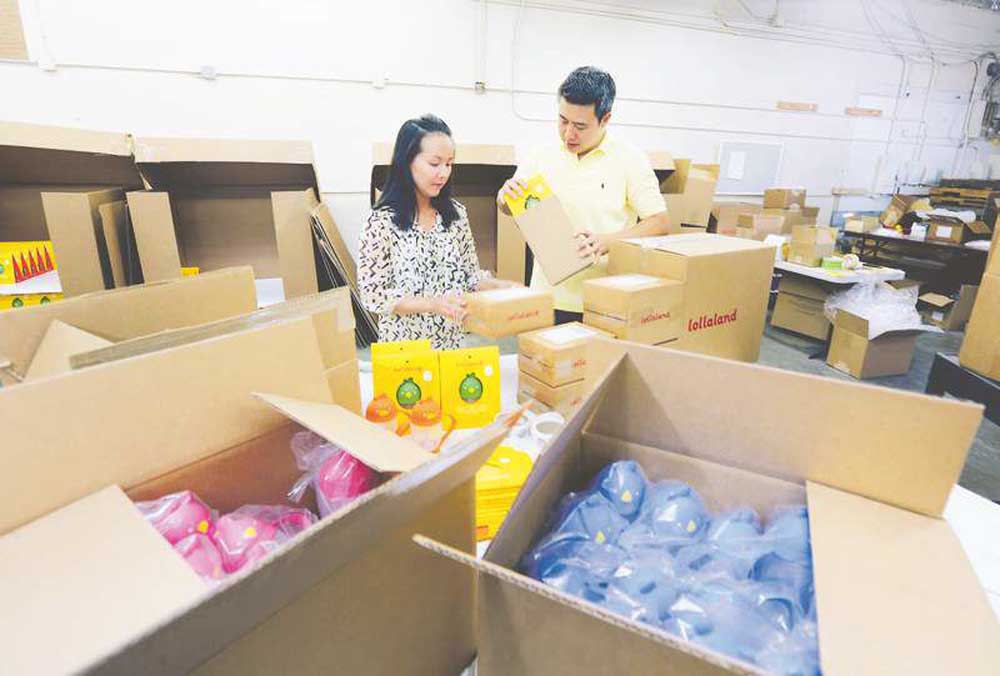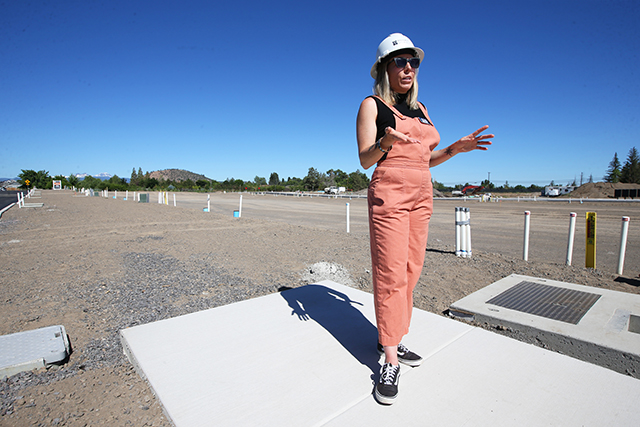Small online businesses face shipping challenge
Published 5:00 am Thursday, September 26, 2013

- Hanna Lim and her husband, Mark, owners of Lollacup, a maker of specially designed sippy cups, at their warehouse in Monrovia, Calif. The husband-and-wife team used to handle fulfillment from their living room, but outsourced their orders to a third-party logistics provider after sales jumped.
Like many small-business owners, Hanna and Mark Lim gave little thought to fulfillment until they had no choice.
For the husband-and-wife owners of Lollacup, a maker of specially designed sippy cups, the moment of truth came about 36 hours after a segment about their company was shown in April 2012 on “Shark Tank,” the ABC reality show. At the time, the Lims, parents of young daughters, were handling their own fulfillment — the packing and shipping of products ordered online — from their Pasadena, Calif., living room.
Trending
After the show was broadcast and their daily orders doubled to 800, the Lims decided that something had to change.
“We had boxes piled everywhere,” Hanna Lim said. “We were begging friends and family to come over and help, bribing them with wine, and we still couldn’t keep up.”
It was then that they made a choice common among early-stage e-commerce vendors: They decided to outsource their orders to a third-party logistics provider, known in the business as a 3PL, in exchange for a percentage of revenue. In this case, that was about 3.5 percent of each retail sale and 7 percent of each wholesale order, not including delivery costs.
The challenge of fulfilling orders is one of those problems that all e-commerce companies want to have, until they do, at which point it can swallow margins, alienate customers and even sink a business if not managed carefully.
“In a world where customers have more choices online, most businesses realize you need to be able to get your product to them quickly and cheaply to stay competitive,” said Bob Halpin, an engineering consultant with UPS Customer Solutions, who helps UPS customers improve their fulfillment operations.
The pressure on small businesses to manage fulfillment costs stems from expectations in the marketplace generated by large retailers, especially Amazon. The online giant has 40 large fulfillment centers around the United States that it uses to offer free two-day shipping to its Prime subscribers, and it is now building five new facilities that are expected to enable it to deliver many items the day they are ordered.
Trending
Some smaller e-commerce sites have responded with something of an if-you-can’t-beat-them-join-them attitude, turning to Fulfillment by Amazon, a program that lets them use the retailer’s state-of-the-art distribution system to ship items not even sold by Amazon. But it typically charges more than a standard 3PL provider, about $6 per sale for a product with the approximate size and weight of a sippy cup.
Other businesses treat fulfillment as something of an existential exercise, one subject to constant reappraisal and revision. Several months after the Lims signed on with their 3PL provider, for example, they took another look at the arrangement. Not only were they spending about $8,000 in monthly 3PL fees, they were enduring far more shipping mistakes. They priced other options, and they realized they could improve quality control and save money by shifting final assembly to their manufacturer and bringing inventory and shipping back in-house, this time to a 2,500-square-foot warehouse staffed by one new employee.
“We’re probably going to save about $50,000 this year doing it this way,” Hanna Lim said. “Once we went the 3PL route, it could have been easy to say, ‘OK, that’s done.’ But instead we kept questioning and evaluating. We still are.”
Although no two in-house fulfillment operations are the same, certain principles apply. In most successful operations, warehouse space is divided into a section for bulk inventory and an area where product can be found quickly to fill orders, a process known as pick-and-pack. One trend Halpin said he had noticed in recent years was the heightened sophistication of the off-the-shelf software products used to manage aspects of the process.
At Lollacup, for example, the company’s online store is powered by an e-commerce package from Shopify, which exports inventory data to the Lims’ QuickBooks program, and interfaces with ShipStation to print shipping labels and generate the right amount of postage.








